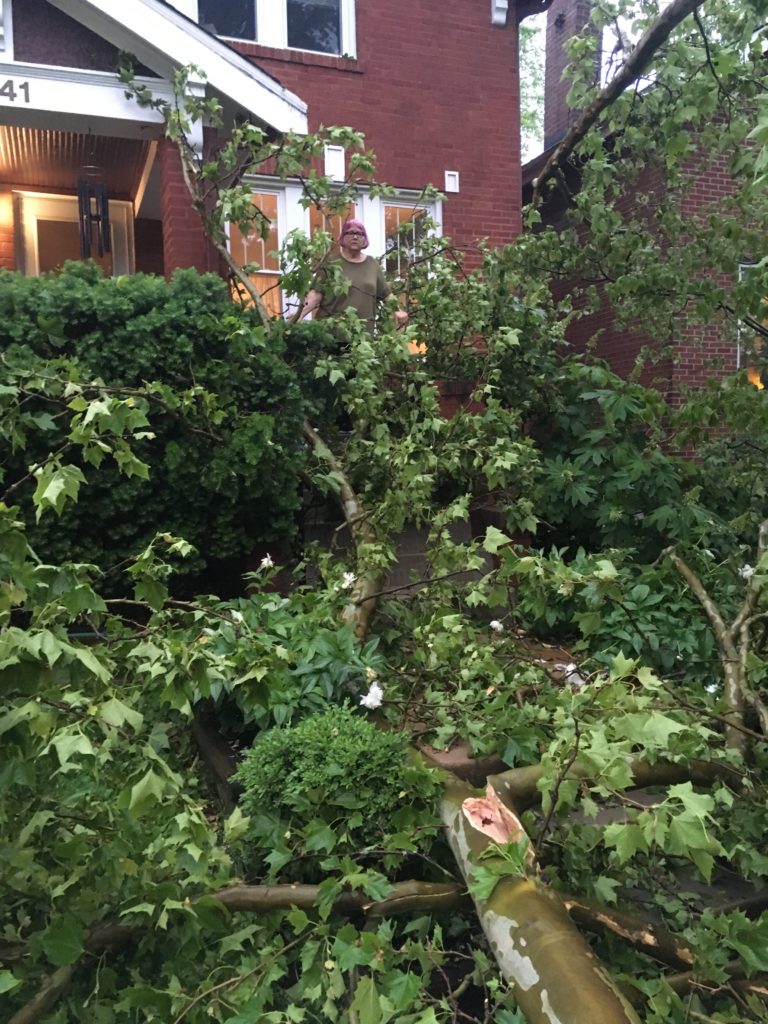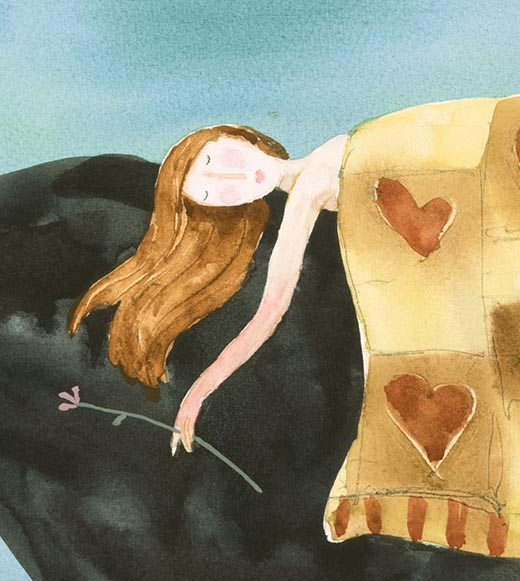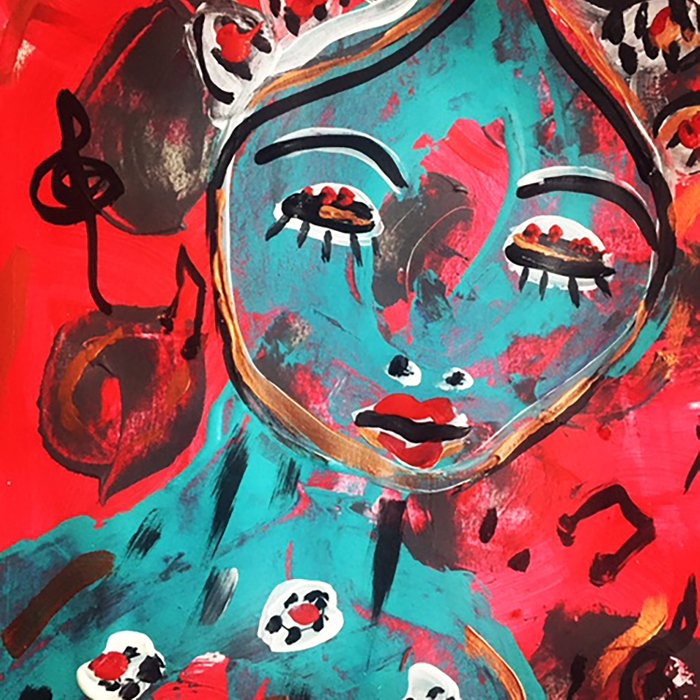Find. And Follow.

For today, one last post before I leave on Friday for a month-long retreat at the Forest Refuge:
Ajahn Sucitto’s very succinct response to a pair of written questions submitted during a recent Q&A session (also at the Forest Refuge).
Question #1:
“Is there anyone equivalent to the saints who one can ask for help with one’s practice?”
Question #2:
“If you could only give one suggestion or piece of advice to someone to further them towards liberation, what would that suggestion or piece of advice be?”
Sucitto’s response:
“Well, the answer to both these questions would be: Find a spiritual friend.
“And, if a teacher arises that you find yourself getting good results with, follow that teacher.”
***
I wholeheartedly agree.
After the retreat, I’ll be staying with my spiritual friend and teacher, Mirabai. (That’s us, in the photo above.)
Then I’ll be home on July 3 and hope to post again on July 8. I expect I’ll have a lot to say. Stay tuned.
Things Change

Just as I was getting ready to write my blog post yesterday, the tornado sirens started going off and the sky got really dark, so I went to the basement till it brightened up again, but then when I went upstairs, I discovered that the top half of one of the hundred-year-old Sycamore trees in front of my house had broken off and landed on the steps going up to my house (see photo)…

…and on the street in front of my house (see next photo)….

….and on my sweet little car that was parked in front of my house (see third photo).
So. No blog post last night.
And I’m thinking I probably won’t be writing blog posts for the next few day, as it seems I’m going to have to deal with a whole bunch of stuff I hadn’t really planned to be dealing with.
Such is the nature of this ever-changing life.
Widening. Offering. Opening.

Almost 30 new talks from Ajahn Sucitto’s month-long retreat at the Forest Refuge have already been posted on dharmaseed! (And the retreat is still going on.) Normally I start listening to these talks as soon as they’re posted — in the order they’re recorded, as if I were right there on the retreat — but since I still haven’t quite finished re-listening to the talks from the retreat I was just on, I’ve been holding off.
With a few exceptions.
For example, the ones with great titles such as: The Wisdom of Walking and of Sheepdogs.
Also this lovely little 12-minute talk: Puja — A Daily Going Forth. (“Puja” refers to ritual, devotional practices such as chanting, lighting candles, bowing, etc.) Here’s an excerpt:
“Puja is a touching-in point for the day. It’s not necessarily the first thing we do, but it’s the point where we establish a conscious intention to enter Dhamma. We are touching this place in us that wishes to dedicate. This is a very important place (or movement or occasion) in citta — in awareness, in this consciousness stream — where although we can be doing and meeting and losing and winning and so forth (very much dealing with our personal lives and in them), at this point we’re making an occasion where we highlight, underline, illuminate: the quality of dedicating ourselves.
“Or even dedicating on behalf of someone else! Which is really a helpful thing because sometimes we just can’t be bothered. We can get to that place where we’re fed up with ourself. Then we can just: Oh, well, for my mother, my father, my relatives, for the welfare of others… in recognition, in gratitude of those who’ve come before me, who’ve made this body/mind possible, made this Dhamma possible, made this occasion possible… for that I can say: Thank you.
“This is the place in us which is opening. The citta can very much be embroiled with its own kamma and preceptions…. things that happened with no conscious choice (we’re just IN them) and getting embroiled with dealing with that or speculating about it or struggling with it…
“Puja is where we can step out of that process altogether for the moment. Just to dedicate. Somatically, the experience is one of widening, rising, opening. Widening the heart. Bringing something forth. That’s the gesture. The bring-forth is the gesture of widening and opening. And there is a certain relief of the pressure of self in just doing that. Relief from the pressure of becoming, identifying, planning, and so forth. Relief from the tangle and pressure of that. By dedicating, opening, offering. This is the daily going forth….
“This opening quality is called: Buddha (Waking Up)…. We are activating buddha potential, abhicitta (the higher mind), bodhicitta (the awakening heart). The Buddha is someone who has perfected that. So we emulate that…
“The consequence of this is that you open to awareness. You unfold the citta from its formulating and fabricating. You unfold it. And it reveals: Awareness.”
Is There Something That’s Stopping You?

Another reflection from one of the sessions Phillip led at the Nature of Awareness retreat:
“Awareness bathes each of us in unconditional acceptance. It doesn’t move toward or away from any aspect of our personality. It is unconditionally accepting of whatever arises from this endless potential that a human mind is capable of creating.
“Awareness knows and accepts. It does not judge.
“Rest in awareness and let the multiplicity be known, and accepted. What somehow can not be accepted, hold with tenderness.
“Is there something that you believe about yourself that’s stopping you in your movement toward freedom? Something that’s blocking you? Freezing you?
“If there is, in this very moment, can you hold it in compassion? Can you let yourself rest in the knowing of this?”
The Mind Can Rest

I can’t give you a link to the recorded talks from the Nature of Awareness retreat I just went to, because those talks are only available to people who attended the retreat. But I can report on my own experience, and my experience is this:
I find myself returning again and again to the following words, which struck me as deeply significant when Phillip offered them during his guided meditation on the Earth and Wind Elements:
“In the stillness, the mind can find ground. Can rest. But also in movement. Attention can rest in knowing movement. Attention can rest in regard to a moving object — whether it’s the wind element, or thoughts, or desire or aversion or joy… Attention can rest. This knowing capacity is not dependent on whether the object that is being know is still or moving.
“This stillness, that allows the resting, is awareness.”
We’re Practicing, Not Resulting

More notes from the retreat on Phillip Moffitt’s instructions for Living an Intentional Life:
“We are living intentionally. We are learning to live intentionally. Each moment is a moment of practice. It is NOT a moment of resulting. So often we get confused and we get oriented to results, and that I call: resulting.
“Practicing is: This is another moment to practice. If we practice with clear intention — using the skills we have — results follow as best they are able, given the conditions.
“This is easily provable. And yet we often don’t have that kind of faith, or just that kind of remembering: “I’m practicing, I’m not resulting. All parts of me are welcome, so I can just let go. I can just be here.
“I know how to respond. If I react instead of responding, I know how to respond to my reacting. And if I react to my reacting, then I still know how to respond!
“It take such a small amount of faith, of confidence — but it is critical. And we come to that confidence, that faith, by remembering: This is what we’re about.
“The path is reliable. We just have to practice.”
This is What Matters to Me

For those of you who were at Sangha this past Sunday, here is the “Write This Down” list I promised from Phillip Moffitt’s closing night talk at the Advanced Practitioner retreat:
- Know for yourself and remember: This is what matters.
- Be clear as to your aspiration: If this is what matters, then my aspiration is to be in relation to it in this particular way.
- Act with intention: My goals and the means for reaching those goals may change, but my moment-to-moment intention is based on my values — and these do not fluctuate.
- Maintain the commitment: Living an intentional life requires commitment, which I will cultivate in this particular way.
It was quite extraordinary to have a teacher say: “Write this down” in the middle of a dharma talk! So I’m inspired to take it on:
- This is what matters to me: A calm, clear mind and a peaceful loving heart.
- This is what I aspire to: Freedom from “Judging Mind.”
- This is what my intention is: To act with kindness and goodwill, as best I am able.
- This is how I will maintain my commitment: Practice daily (Year of Getting to Know Goodwill); deepen practice by going on retreats; meet regularly with a wise and caring teacher (Phillip).
***
What matters to you?
I am Delighted

Last night a friend gave me The Book of Delights, by poet Ross Gay, which (so far) seems to be one of the most Buddhist non-Buddhist books I’ve ever come across, beginning with the concept for the book — which is a PRACTICE — that I think I’m going to try to take on (with some adjustment).
Gay writes: “One day last July, feeling delighted and compelled to both wonder about and share that delight, I decided that it might feel nice, even useful, to write a daily essay about something delightful. I remember laughing to myself for how obvious it was. I could call it something like The Book of Delights.
“I came up with a handful of rules: write a delight every day for a year; begin and end on my birthday, August 1; draft them quickly; and write them by hand. The rules made it a discipline for me. A practice. Spend time thinking and writing about delight every day.”
*** Not sure how contemplating “delight” fits into Buddhist practice? Stay tuned for my next series of Study & Practice classes! (Details coming soon.) ***
Gay’s first entry begins: “It’s my forty-second birthday. And it would make perfect (if self-involved) sense to declare the day of my birth a delight, despite the many years I’ve almost puritanically paid no attention to it. A sad performance of a certain masculine nonchalance, nonflamboyance? Might’ve been, poor thing. Now it’s all I can do not to bedeck myself in every floral thing imaginable–today both earrings and socks.
“Oh! And my drawers, hibiscus patterned, with the coddling pocket in front to boot. And if there’s some chance to wear some bright and clanging colors, believe me. Some bit of healing for my old man, surely, who would warn us against wearing red, lest we succumb to some stereotype I barely even know. (A delight that can heal our loved ones, even the dead ones.) Oh broken. Oh beautiful.
“So let me first say, yes, mostly, the day of my birth is an utter and unmitigated delight, and not only for the very sweet notes I sometimes get that day–already five by 8:15am, from Taiwan, the Basque Country, Palo Alto, Bloomington, and Frenchtown, New Jersey–but also for the actual miracle of a birth, not just the beautifully zany and alien and wet and odorous procedure that is called procreation, but for the many thousand–million!–accidents–no, impossibilities!–leading to our births.
“For god’s sake, my white mother had never even met a black guy! My father failed out of Central State (too busy looking good and having fun, so they say), got drafted, and was counseled by his old man to enlist in the navy that day so as not to go where the black and brown and poor kids go in the wars of America. And they both ended up, I kid you not, in Guam. Black man, white woman, the year of Loving v. Virginia, on a stolen island in the Pacific, a staging ground for American expansion and domination. Comes some babies, one of them me. Anyway, you get it; the older I get–in all likelihood closer to my death than to my birth, despite all the arugula and quinoa–the more I think of this day as a delight.”
***
It goes on — delightfully — from there. Go get the book! And while you’re at it, get two (or more) and give them to friends. They will love you for it.
(Thank you, Brian!)
Notice What Your Mind Isn’t Landing On

In preparation for the Advanced Practitioner Retreat on the Nature of Consciousness that some of my CDL Buddies and I are getting ready to attend, I offer this “very, very highly compressed teaching” from Ajahn Sucitto’s talk, Resetting Your World (at about the 24-minute mark):
“We can know how to discharge the contact impression that presses on us, that pushes us. We can know how to receive that and discharge: don’t jump on it, don’t worry about it, don’t proliferate about it. Just discharge. Have we known that? Have we recognized that? This is where contact does not ignite. Does not flash. Does not trigger.
“No triggering, no perception arises. None of: oh it’s this, it’s this, it’s always this; I am that; I should be this… None of that arises.
“The thinking doesn’t go on around how to deal with it or why one has it or how to stop being it. So there is an ending of the suffering.
“When you see [in the teachings] something like: where there is no mind… It’s: WHERE there is no mind. It doesn’t say: there IS NO mind, no mental functions… It means: In the instance where there isn’t that — notice what your mind ISN’T landing on.”
***
This is quite a talk. I posted an excerpt from it a few weeks ago in a post titled: The Very Essence of Being Consciousness. Click here for the talk, which bears repeated listening. Click here for the posted excerpt.
Not Your Standard Brahma Viharas

For the past week or so, I’ve been listening every single day to Ajahn Sucitto’s guided meditation on the Brahma Viharas — which is different from any Brahma Vihara instructions I’ve ever heard before — and I just can’t keep from going back to it again and again.
The talk begins with some introductory remarks, in which he uses a lot of Pali terms (these instructions were given near the end of a month-long retreat for experienced meditators, so you’re kind of jumping into the deep end here) but starting at about the 10-minute mark, the actual guided instructions begin and it’s pretty easy going from there.
A transcript won’t do it justice. You really just have to listen (and not while you’re driving or jogging or trying to do something else!)
But I will offer this little bit as an incentive (which starts at about 37 minutes in):
“As the peripheries begin to relax a little more, the center becomes more apparent. Not exactly as a sensation, but as a quietness, where everything else isn’t. There’s a warming, and there’s a kind of an open stillness…
“This is not so easy to discern because we’re normally discerning presences rather than absences. But to the extent that there is an increase in relational space, where it’s not constricted, not intense, not frantic, not weighted down — there is an increasing lightness of being. A center. Where the praise/blame, happiness/unhappiness — where that doesn’t hit.
“And the more you’re in touch with this, the freer your volitions are. They’re less impaired by external circumstances and more like: this is just because I’m alive.
“This is what happens. When one is truly, fully alive, then these measureless abidings are just — standard. It’s the loss of them that is to be seen as a calamity.
“Whenever you can, just return to that centering… Bringing the body back…. Working into these areas so they become areas you are familiar with and you know the tonalities of and you know how to heal them…
“This is the basis that we can use. And you can refine it. Relaxing around the eyes, the throat, the mouth… So you’re not driven out to the edges of your body — like defense outposts — but staying within the center, sending good energy and goodwill throughout your territory… And then you can widen the territory.”
***
Listen to the whole talk here. Guided instructions begin at about the 10-minute mark. Enjoy!
